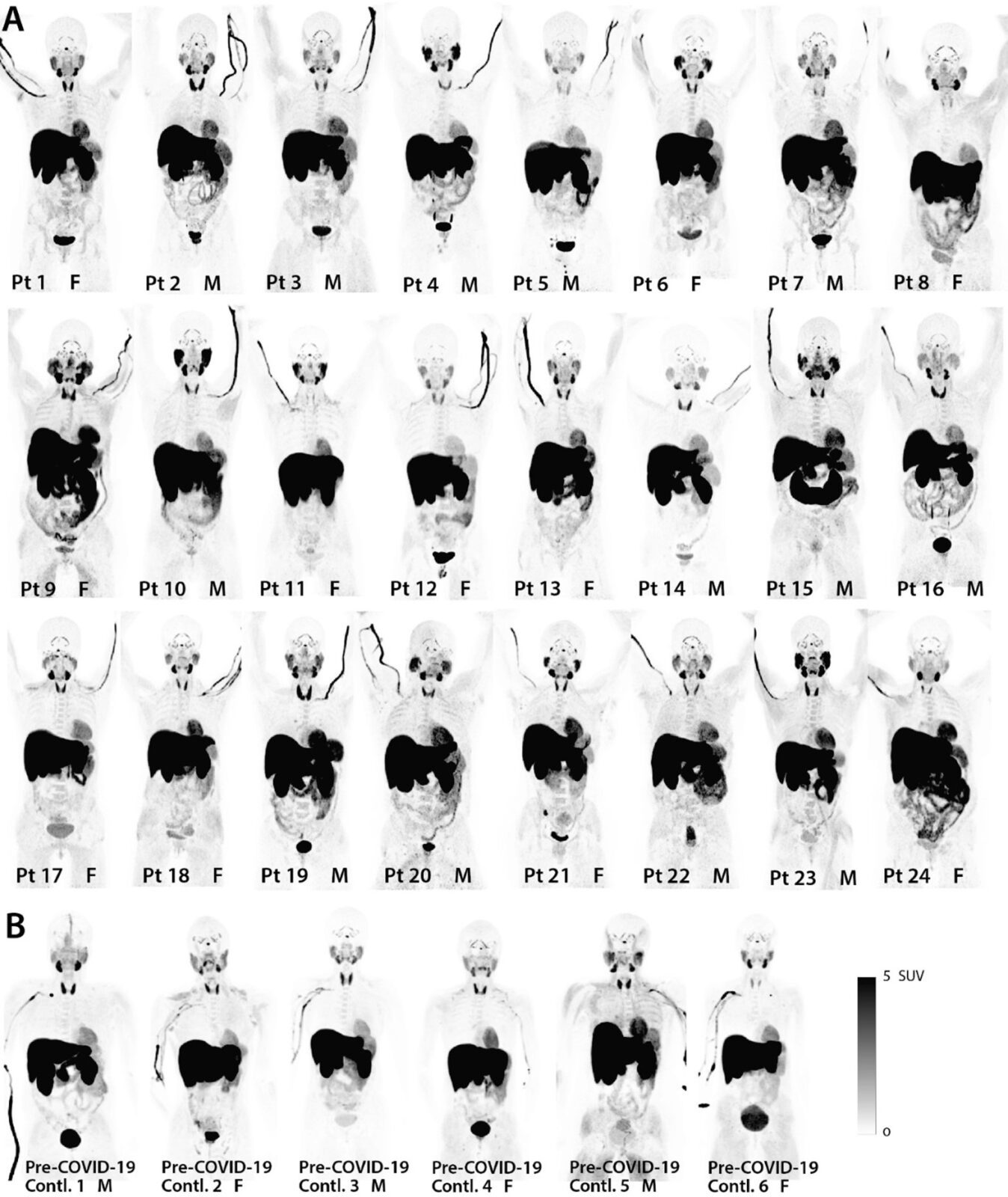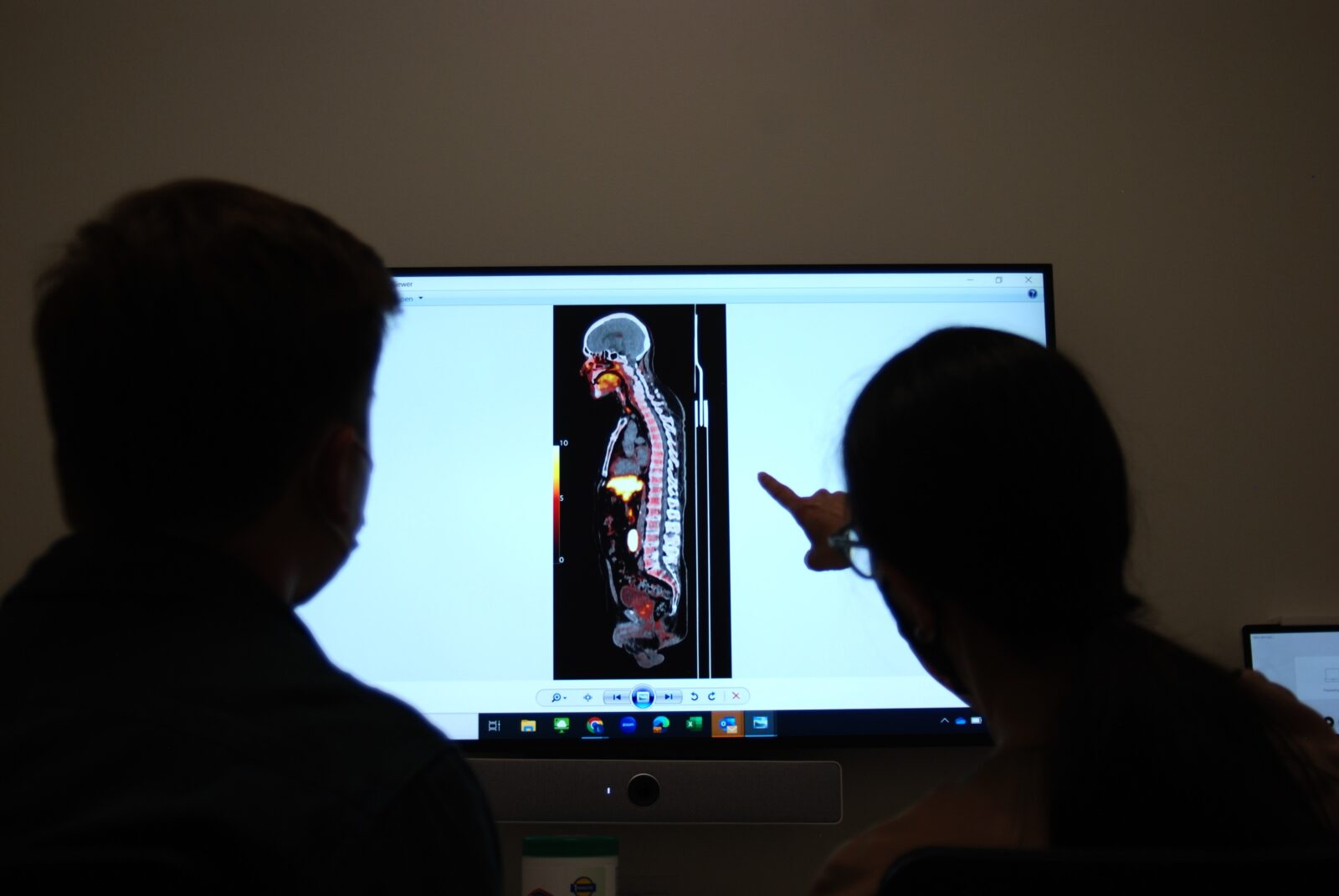LIINC Immune System Imaging Program
The LIINC team uses advanced imaging technology to scan the body to discover how the immune system is functioning after COVID-19.
Why Imaging?
While tissue biopsies can show us exactly what’s happening in a piece of the body, our imaging studies capture pictures of the entire body. Researchers can then investigate the entire body at once to see what could be causing Long COVID symptoms.
How do the scans work?
We give participants a small dose of a molecule that gets “stuck” in immune cells and releases a signal that our scanners can read. This lets us see where in the body the immune system is responding to something, whether it’s in the brain, bone marrow, or heart. Our scans are a combination of two types of scans: a PET scan and a CT scan.

How does this relate to Long COVID?
Our scans will tell us if participants’ immune systems are out of balance. This could be because they are responding to something that should not be there (for example, persistent COVID-19 virus). The immune system could also be attacking something it shouldn’t. These scans can let us know if this is the case.
Who are you looking for to take part in this study?
While we image people with and without Long COVID, we are especially interested in people who have fully recovered from COVID-19 and have no continuing symptoms to act as negative controls for those with Long COVID. This can provide us insight into why some people may develop Long COVID while others do not and how to develop measurements or tests of Long COVID.
How do I get involved?
To have the opportunity to get involved with our imaging program, we’ll need participants to first join our observational cohort LIINC.
